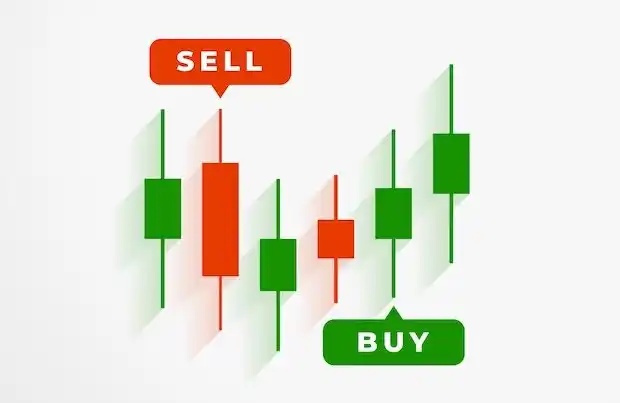Is the Mysterious Team That Dominated Solana for Three Months Launching a Coin on Jupiter?
An anonymous team with no official website, no community, has consumed nearly half of the transaction volume on Jupiter in 90 days.
To gain a deeper understanding of this mysterious project, we must first step into an on-chain transaction revolution quietly unfolding on Solana.
HumidiFi's total transaction volume accounts for 42% of Jupiter's transaction volume
Source: Dune, @ilemi
How Self-Operated AMMs Are Reframing On-Chain Transactions
In the context of AMMs, toxic order flow refers to high-frequency arbitrageurs leveraging low-latency connections and advanced algorithms to front-run price differences, swiftly bridging the on-chain price with price discovery venues (typically centralized exchanges like Binance), with the profits siphoned off by traders, liquidity providers, and on-chain market makers.
In traditional financial markets utilizing a Central Limit Order Book (CLOB) to match trades, professional market makers can mitigate toxic order flow in various ways (such as adjusting spreads, pausing quotes). By analyzing order flow patterns, they can identify traders with an information edge and adjust quotes accordingly to reduce losses stemming from adverse selection. Thus, market makers operating on Solana naturally gravitated toward DEXs utilizing CLOBs like Phoenix. However, during Solana's "meme frenzy" in late 2024 to early 2025, the Solana network buckled under unprecedented demand, causing market makers' orders to frequently fail to submit on-chain, and updating quotes incurred significant expensive computational costs, leading to a sharp increase in market maker expenses.
A series of challenging real-world issues are now compelling a group of the most seasoned AMM market makers to fundamentally rethink how on-chain markets operate, giving rise to a revolutionary new market structure.
This new paradigm is known as "Self-Operated AMM" (Prop AMM), aiming to provide on-chain liquidity with lower spreads and increased efficiency while minimizing the risk of exploitation by high-frequency arbitrageurs.
SolFi, ZeroFi, and Obric were the initial triumvirate of Self-Operated AMMs, offering no public contract interface but directly exposing the interface to major trading routes like Jupiter and requiring Jupiter to route orders to their AMMs. This design makes it exceedingly difficult for external professional arbitrageurs like Wintermute to directly interact with the contracts as they cannot comprehend or predict the trading logic, thereby preventing market maker quotes from being front-run and issues of adverse selection by information advantaged parties.

In February 2025, SolFi, ZeroFi, and Obric were the three main proprietary AMMs.
Source: Dune @the_defi_report
HumidiFi's Blitzkrieg
Competition among proprietary AMMs heated up by July 2025, and a project called HumidiFi rapidly reshaped the entire market landscape.
HumidiFi officially launched in mid-June 2025 and, just two months later, had captured 47.1% of all proprietary AMM trading volume, emerging as the undisputed market leader. In contrast, the former dominator SolFi saw its market share plummet from 61.8% two months prior to 9.2%.

Source: Dune @the_defi_report
HumidiFi's dominance was particularly evident in the SOL/USDC trading pair. On October 28, HumidiFi processed $1.08 billion in SOL/USDC trades in a single day, accounting for 64.3% of that pair's total volume for the day.

Source: Dune @the_defi_report
HumidiFi also had a high penetration rate in the Jupiter router. As the aggregator with an 86.4% market share on Solana, Jupiter's routing choices largely dictate traders' actual experiences. Data from October 20 showed that HumidiFi held a market share of 46.8% in Jupiter, more than four times that of the second-place TesseraV (10.7%).

Source: Dune @the_defi_report
Expanding the view to the entire self-custody AMM ecosystem, HumidiFi's dominance remains solid. On October 28, the total trading volume of all self-custody AMMs reached $21.8 billion, with HumidiFi alone holding $13.5 billion, accounting for a staggering 61.9%. This number not only far surpasses the second-place SolFi with $3.09 billion but even exceeds the total trading volume of competitors ranked 2-8.

Source: Dune @the_defi_report
This victory by HumidiFi was almost achieved in complete "stealth" mode. It had no website, no early Twitter account, and no information about team members was ever made public.
HumidiFi doesn't need marketing, airdrops, or storytelling. It only needs to provide better spreads and execution prices than its competitors in every trade. When Jupiter's routing algorithm repeatedly chose HumidiFi, the market had cast its vote in its own way.
The Race for Speed and Cost
The key to HumidiFi's success lies in compressing the computation cost of oracle updates to the extreme and cleverly converting this technological advantage into absolute market dominance through the Jito auction mechanism.
Firstly, HumidiFi has a very low consumption of computing resources. According to data provided by @bqbrady, HumidiFi only consumes 799 CUs (Compute Units) per oracle update. In comparison, its main competitor SolFi requires 4339 CUs. TesseraV operated by top market maker Wintermute also requires 1,595 CUs, twice as much as HumidiFi.

Source: X, @bqbrady
HumidiFi also maximizes its advantage of low CU consumption and secures absolute transaction priority in Solana's MEV infrastructure Jito auction. In the Jito auction, transaction priority is not determined by absolute tips but by the Tip per CU. HumidiFi pays approximately 4,998 lamports as a tip for each oracle update. Due to its extremely low CU consumption (799 CUs), its Tip per CU ratio reaches an astonishing 6.25 lamports/CU.

According to data provided by Brennan Watt, an engineer at Anza, a core developer for Solana, HumidiFi used 6 times fewer CUs than the former flagship SolFi of Prop AMM and paid over 8 times more in fees.
Another key advantage of HumidiFi is the oracle update frequency. HumidiFi updates its oracle 17 times per second, far surpassing its main competitors (SolFi's 13 times, TesseraV's 11 times, and ZeroFi's 10 times).
In the midst of the cryptocurrency market's intense volatility, this nearly real-time price tracking capability allows it to consistently lock in around fair value, avoiding opportunities for arbitrage while not needing to self-protect through widening spreads, thus providing tighter liquidity.
Furthermore, HumidiFi has performed well in cost control. HumidiFi's daily operating cost is only $2,247. In comparison, although SolFi manages 5 times the assets under management (AUM) of HumidiFi ($80 billion vs. $16 billion), its daily cost is only 20% lower than HumidiFi's at $1,785.
WET Token Launches on Jupiter DTF

During the community call on the evening of October 30, the Jupiter team announced their initial launch project on their ICO platform DTF: HumidiFi, with the token symbol WET

According to the disclosed demo webpage, the listing is divided into three parts:
A whitelist (acquisition rules not yet determined) can ensure a portion of the allocation.
JUP stakers can secure an allocation based on their staked amount.
Public allocation follows a first-come, first-served (FCFS) model, and once filled, it immediately starts trading on-chain, without any lock-up waiting period.

It is worth noting that the HumidiFi team explicitly stated on Twitter that there are "no VC allocations," which is particularly rare in the current market environment filled with low circulation and high FDV.
Proprietary AMM is a "winner-takes-all" race, and HumidiFi has achieved its current dominant position based on its technological strength. However, this also means that once a new competitor breaks through in terms of CU efficiency or oracle speed, it could quickly erode its market share. This war is clearly just beginning.
Welcome to join the official BlockBeats community:
Telegram Subscription Group: https://t.me/theblockbeats
Telegram Discussion Group: https://t.me/BlockBeats_App
Official Twitter Account: https://twitter.com/BlockBeatsAsia


 Forum
Forum Finance
Finance
 Specials
Specials
 On-chain Eco
On-chain Eco
 Entry
Entry
 Podcasts
Podcasts
 Activities
Activities
 OPRR
OPRR








